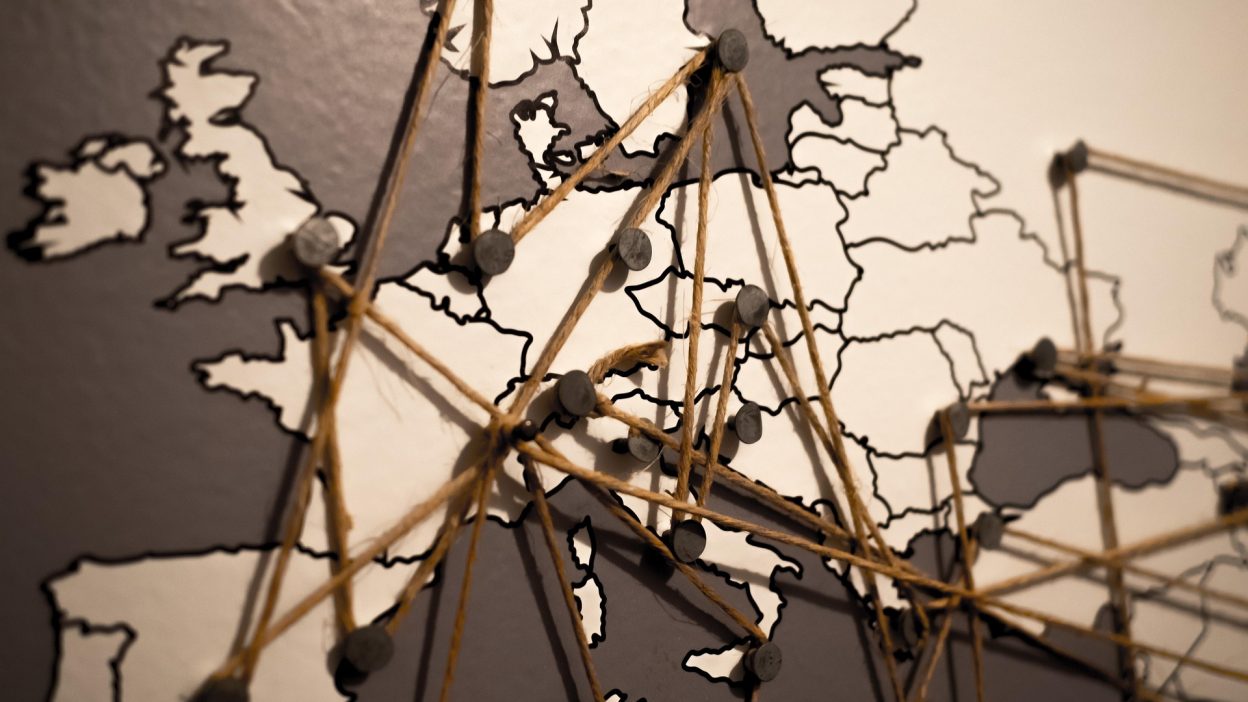How Emperor Justinian I’s Empire Was Brought To Its Knees By A Deadly Pandemic
1. The Deadliest Outbreak of the Ancient World: An Introduction
The Plague of Justinian was one of the most catastrophic pandemics in recorded history. Spreading across Europe, West Asia, and North Africa in 541 AD, it ravaged cities, devastated populations, and crippled the economy of the Eastern Roman Empire. This relentless disease, identified as bubonic plague, is believed to have originated in Egypt before travelling through trade routes to the heart of Constantinople.
At its peak, this pandemic claimed thousands of lives daily, leaving streets littered with corpses and cities struggling to function. The empire, already under strain from wars and political instability, faced an unprecedented crisis. With Emperor Justinian I at the helm, the Byzantine state struggled to maintain control as the plague decimated its military forces, workforce, and administration. The repercussions of this disaster were long-lasting, altering the course of European history and leaving a deep imprint on medieval society.
2. The Silent Killer: How the Plague of Justinian Spread
Unlike the modern understanding of disease transmission, people in the 6th century had no concept of germs, bacteria, or quarantine measures. The Plague of Justinian spread primarily through fleas carried by rats, which thrived in the empire’s major trade cities. Constantinople, Alexandria, Antioch, and Rome became hotspots for infection as merchant ships brought contaminated goods from distant lands.
The disease moved quickly along Silk Road routes, merchant ships, and land caravans, making its way deep into the empire’s territories. The lack of proper sanitation, overcrowding in urban centres, and the high dependence on trade networks only fuelled its rapid transmission. Once infected, individuals displayed symptoms within a few days, leading to a swift and horrifying demise. The empire’s inability to contain the disease resulted in a death toll that spiralled out of control.
3. A Grim Toll: Deaths, Injuries, and the Terrifying Statistics
The Plague of Justinian was a catastrophe on an unprecedented scale. Its impact can be measured by the staggering loss of life and economic devastation it caused:
- Daily Death Rate: In Constantinople alone, reports suggest that 5,000 to 10,000 people per day succumbed to the illness at the peak of the outbreak.
- Total Death Toll: Historians estimate that between 25 to 50 million people perished, roughly half of Europe’s population at the time.
- Percentage of Byzantine Population Lost: The Eastern Roman Empire lost nearly 40% of its total population, leading to widespread labour shortages and economic collapse.
- Urban vs. Rural Impact: While cities were hit hardest due to dense populations, rural areas also suffered as trade networks collapsed and food production declined.
- Long-Term Effect on Society: Entire villages were abandoned, fields remained uncultivated, and famine became a secondary disaster following the plague.
4. Symptoms and Horrific Suffering: The Nightmare of the Plague
The Plague of Justinian exhibited symptoms that left victims and physicians utterly helpless. The disease began with mild fever, headaches, and chills, but within hours, more terrifying signs appeared. Swollen buboes—painful lumps filled with pus—emerged in the groin, armpits, and neck, signalling a horrific internal infection.
Victims suffered delirium, hallucinations, and uncontrollable vomiting, while some lost their senses entirely before falling into a coma. The body’s organs began shutting down, leading to agonising pain and eventual death. Reports from the time describe the streets of Constantinople as littered with bodies, with no space left for proper burials. Many died alone in their homes, while others collapsed in public places, left to rot under the scorching sun.
5. The Crumbling Byzantine Empire: Political and Economic Collapse
As the plague spread, the very foundations of the Byzantine Empire began to erode. Emperor Justinian I, who had grand ambitions of expanding his empire, suddenly found his resources drained and his armies weakened. The empire’s economy, heavily reliant on agriculture and trade, collapsed as labour shortages led to food scarcity, inflation, and social unrest.
With the plague wiping out tax-paying citizens, imperial revenues plummeted. Justinian’s ambitious construction projects, military campaigns, and administrative reforms ground to a halt. Trade networks collapsed, and cities that once flourished were left half-empty. The empire, once seen as invincible, now teetered on the edge of destruction.
6. Religious Panic and Mass Hysteria: The Empire’s Psychological Breakdown
With no medical explanation for the outbreak, panic spread among the population, leading to religious hysteria. Many believed that the plague was divine punishment for the sins of the people, while others accused Jews, foreigners, or heretics of bringing the disease.
Priests and monks urged the population to repent, perform mass prayers, and participate in public processions, hoping to appease God’s wrath. Some communities resorted to self-flagellation, while others engaged in bizarre rituals to ward off the disease. The empire’s spiritual crisis only deepened as churches and religious institutions struggled to maintain order amid the chaos.
7. The Emperor’s Struggle: Justinian’s Survival and Leadership
- Justinian I Himself Caught the Plague: The emperor fell ill but miraculously survived, though many believed his near-death experience altered his rule.
- Failed Attempts to Contain the Disease: Quarantines and lockdowns were ineffective due to a lack of medical knowledge.
- Mass Burials and Disposal of Bodies: With graveyards overflowing, authorities resorted to dumping bodies in the sea or burning them in mass cremations.
- Collapse of Governance: The government barely functioned, with major cities descending into lawlessness and disorder.
- Long-Term Political Consequences: The empire’s military expansion slowed, and its enemies, including the Persians and Lombards, took advantage of its weakened state.
8. How the Plague Shaped the Future of Europe
The Plague of Justinian had long-term consequences that reshaped European history. As populations dwindled, cities contracted, economies weakened, and power shifted. The Byzantine Empire, once the dominant force in the Mediterranean, now found itself vulnerable to barbarian invasions and internal revolts.
This plague also set the stage for later outbreaks, including the Black Death of the 14th century. Some historians argue that the demographic collapse triggered by this pandemic slowed down the growth of Western civilisation, delaying the rise of the Renaissance and the expansion of European powers.
9. Could the Plague of Justinian Happen Again?
In an age of modern medicine, antibiotics, and scientific research, it is easy to assume that such a catastrophe could never repeat itself. However, the threat of new pandemics remains real. With globalisation, climate change, and antibiotic resistance, experts warn that future pandemics could arise in unexpected ways.
The lessons of the Plague of Justinian serve as a reminder of the devastating power of disease. Today’s world, despite its technological advancements, is still vulnerable to the rapid spread of pathogens. Understanding history is crucial in preventing similar disasters from occurring again.
10. Conclusion: A Forgotten Catastrophe That Changed History
Despite its immense impact, the Plague of Justinian remains overshadowed by later pandemics. Yet, its consequences were just as devastating, if not more so. It altered the fate of an empire, reshaped Europe’s political landscape, and left a chilling warning for future generations.
This plague stands as a testament to the fragility of civilisation—a single outbreak was enough to bring an empire to its knees. Its legacy, though often forgotten, remains deeply embedded in the course of human history.
FAQs
1. What caused the Plague of Justinian?
It was caused by the bacterium Yersinia pestis, which spread through rats and fleas.
2. How many people died from the plague?
Historians estimate between 25 to 50 million deaths across Europe, Asia, and Africa.
3. Did Emperor Justinian survive the plague?
Yes, he contracted the disease but recovered, though his rule was deeply affected.
4. How did the empire dispose of the dead?
Mass graves, sea burials, and body burnings were used to manage the overwhelming number of corpses.
5. Could a similar pandemic happen today?
Yes, new pandemics could emerge, but modern medicine provides better ways to combat them.




